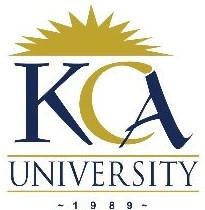 UNIVERSITY EXAMINATIONS: 2010/2011
UNIVERSITY EXAMINATIONS: 2010/2011
SECOND YEAR STAGE EXAMINATION FOR THE DEGREE OF BACHELOR
OF SCIENCE IN INFORMATION TECHNOLOGY
BIT 2102: DATA STRUCTURES AND ALGORITHMS
DATE: AUGUST 2011 TIME: 2 HOURS
INSTRUCTIONS: Answer question ONE and any other TWO questions
Question One [30 Marks]
(a)Describe the following terms:
(i) Abstract Data Types (ADT)
(ii) Data structures
(iii)Data abstraction and
(iv)Structured data types [4 Marks]
(b)Using examples, explain the meaning of the following terms:
i) Full-binary tree and
ii)complete binary tree [4 Marks]
(c) (i) Explain why a queue is a two point structure where a stack is one point structure. [2 Marks]
(ii) State an example of the ADT Queue in everyday life and ADT Queue applications in computer
science. [2 Marks]
(iii)Distinguish between a queue and a priority queue giving an example of each. [4 Marks]
(d) (i) Beginning with an empty binary search tree (BST) what binary search tree is formed when you
insert the following values in the order given: 60,70,20,10,40,30,50 [4 Marks]
(ii) If you delete an item from a binary search tree and then insert it back into the tree will you
ever change the shape of the tree? Demonstrate with an example. [4 Marks]
(e) (i) Explain how a binary search algorithm works. What properties must the input have?[4 Marks]
(ii) What is the worst-case time for binary search algorithms? [2 Marks]
Question Two [20 Marks]
a) (i) Increasing the size of a dynamically allocated array can waste storage and time. Explain
[4 Marks]
(ii) Show how to increase the size of a dynamically allocated array. [4 Marks]
b) Suppose that you have a stack S and an auxiliary stack T. Show how you can do the following by
using only ADT stack operations:
(i) Displaying the contents of S in reverse order, that is, displaying the top last[3 Marks]
(ii) Count the number of items in S leaving S unchanged. [3 Marks]
c) Suppose that pointers require two bytes of storage and values require four. How much total storage
is required for a binary tree of N items? Derive answers for pointer, three-array and single array
storage. [6 Marks]
Question Three [20 Marks]
a) The tribonacci sequence is defined by the equations
(i) Find t4 and t5. [2 Marks]
(ii) Write a recursive algorithm to compute [3 Marks]
b) Evaluate the following postfix expressions: AB+C-DE+*. Show the status of the stack after each
step assume the following values for the identifiers: A = 7, B = 3, C = -12,
D = 5, E =2.
[4 Marks]
c) Write down the functional specification, preconditions and post conditions for the following Queue
operations:
t1 = t2 = t3 =1, tn = tn−1 + tn−2 + tn−3 n ≥ 4
tn , n ≥1
(i) QueueIsEmpty
(ii) QueueDelete and
(iii) GetQueue Front [6 Marks]
d) (i) Explain how does bubble sort works. [2 Marks]
(ii) Estimate how many times faster an average successful search will be in a sorted array
of 100,000 elements if it is done by binary search versus sequential search [3 Marks]
Question Four [20 Marks]
a) Describe briefly the following terms: –
(i) Recursions algorithm
(ii) Order of magnitude analysis
(iii) Algorithm design
(iv)Complexity of algorithm [8 Marks]
b) Explain how a circular linked list eliminates special cases for insertion and deletion.
[2 Marks]
c) The functions below represent the running time of programs, as the input n increases: f
(n) = nlogn, f (n) = 4n, f (n) =n!, f (n) = 6n2
i) Arrange them in order of increasing growth rate. [2 Marks]
ii) Sketch in the same axis (n version time) to illustrate the growth
of the function as in increases. [4 Marks]
d) Convert the following infix expression to postfix form. Show the status of the stack
after each step of the algorithm: A/B/C-(D+E)*F. [4 Marks]
Question Five [20 Marks]
(a)(i) Write down the pseudocode for mergesort on an array A of N items [4 Marks]
(ii) Demonstrate that mergesort satisfies the criteria for recursion. [4 Marks]
(b)Give an intuitive interpretation of how f and g are related if f(n)=O(g(n)). [2 Marks]
(c)Explain the meaning of the following terms: (i) recurrence relations and (ii) initial conditions.
[2 Marks]
(d)(i) Represent the following expression ((A−C)*D)/(A+ (B + D)) as a binary tree for and write the
prefix and postfix form of the expression. [5 Marks]
(ii) How many different trees are there with three nodes? Draw each. [3 Marks]